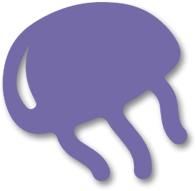The Effects Of Pregnancy On Oral Health
February 28th, 2019
YOU CAN ALWAYS expect your body to go through a lot of changes when you’re expecting, but did you know that some of those changes are to your oral health? The changing hormone levels of pregnancy actually put expecting mothers at greater risk of developing a variety of oral health issues, including gum disease, enamel erosion, and unusual swellings in the gums.
Pregnancy Gingivitis
There’s so much to do in the months leading up to the arrival of a new baby, but that’s no reason to leave brushing and flossing on the back burner, because pregnancy hormones can lead to the tender, swollen gums of gingivitis.
Around 40 percent of pregnant woman have some form of gum disease, and studies have linked pregnancy gingivitis to premature delivery and lower birth weights. Make sure to brush with a soft-bristled toothbrush and floss daily to keep the plaque away from your vulnerable gums.
Morning Sickness And Enamel Erosion
While hormones cause problems for an expectant mom’s gums, morning sickness can cause problems for her teeth. Stomach acid from frequent vomiting, heartburn, or acid reflux eats away at the hard, protective enamel on each tooth. The best way to minimize this effect is to swish with baking soda and water after a bout of morning sickness. This will neutralize any acid left in your mouth before you brush.
Pyogenic Granuloma
Perhaps the weirdest oral health change a pregnant woman can experience is pyogenic granuloma, or “pregnancy tumors.” The name might sound scary, but these swellings (which often resemble raspberries between the teeth) are not malignant. They most often appear in the second trimester. The dentist can remove them if they’re uncomfortable, but they usually vanish after the baby is born.
Protecting Your Teeth — And Your Baby’s!
In addition to your daily brushing and flossing, what you eat can play a big role in keeping your teeth healthy. Cut back on sugary treats and load up on essential nutrients. Your baby’s teeth start developing in the second trimester, and they need plenty of protein, calcium, phosphorous, and vitamins A, C, and D to grow strong.
Your Dentist Is Your Greatest Resource
One of the best things you can do to protect your oral health during your pregnancy is to visit the dentist. Routine cleanings and checkups are crucial for combating pregnancy gingivitis and making sure everything is staying healthy. If it’s been a while since your last appointment or you expect to be expecting soon, get proactive and schedule your next checkup today!
We have the world’s best patients!
The content on this blog is not intended to be a substitute for professional medical advice, diagnosis, or treatment. Always seek the advice of qualified health providers with questions you may have regarding medical conditions.












